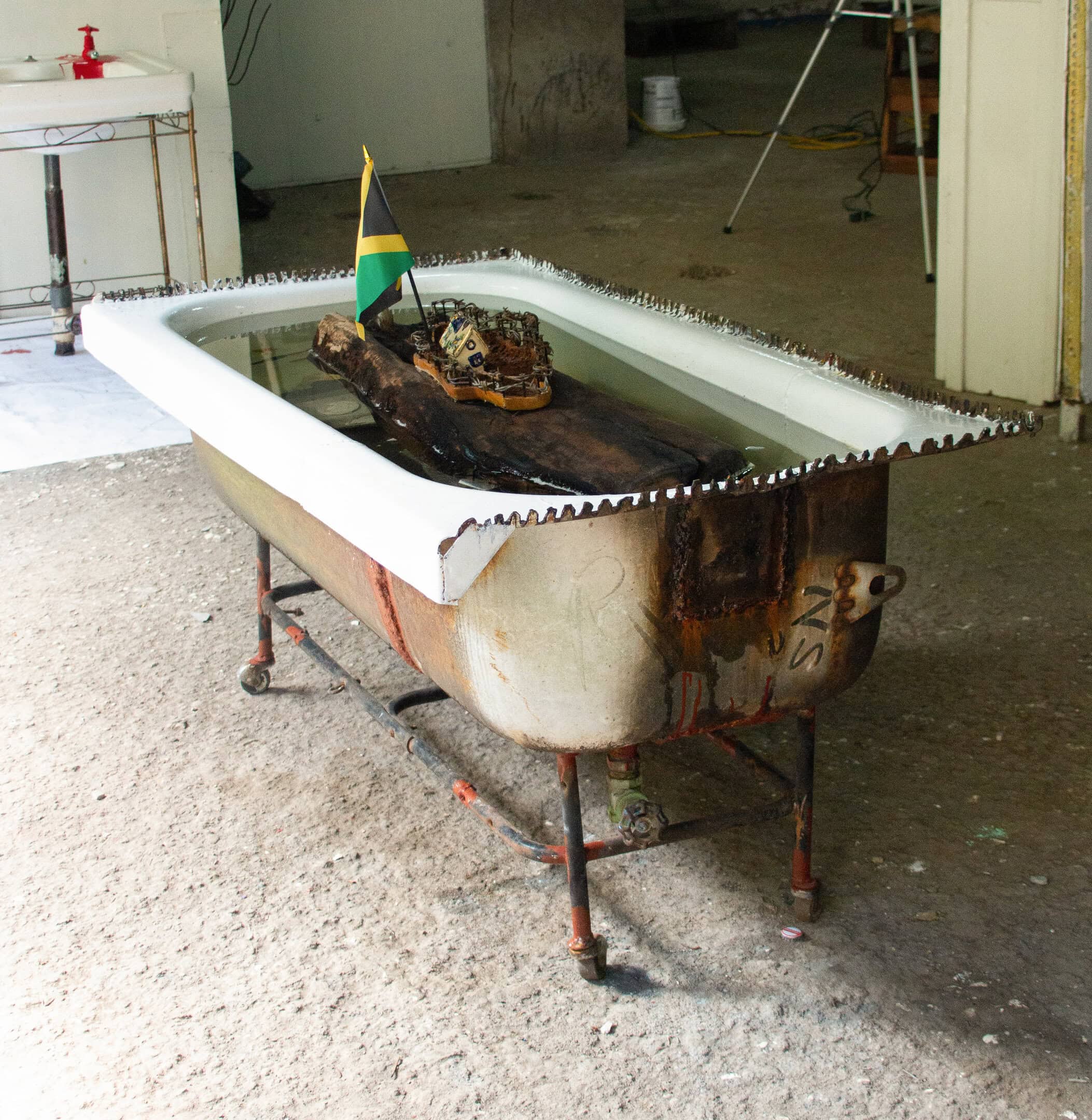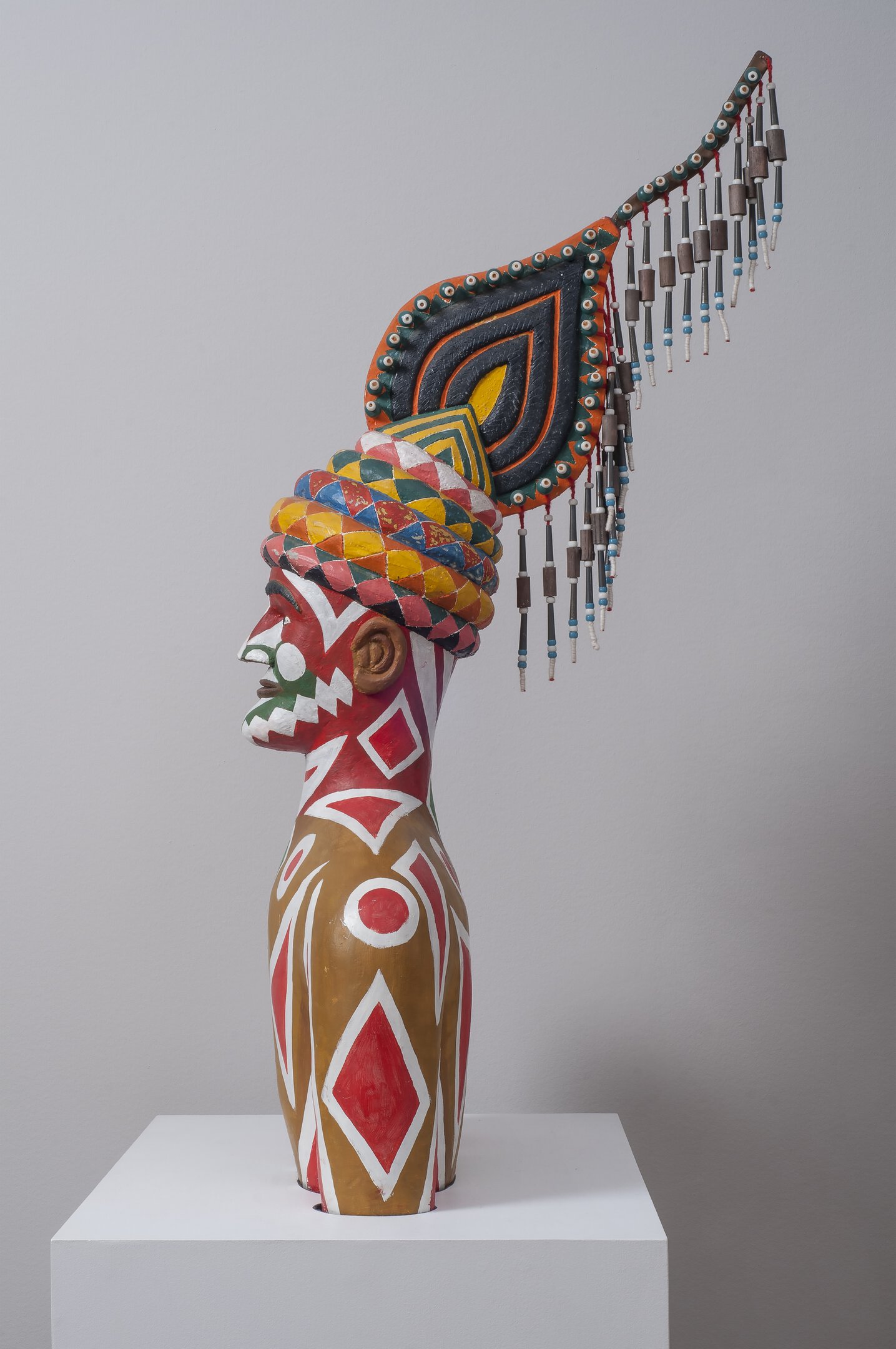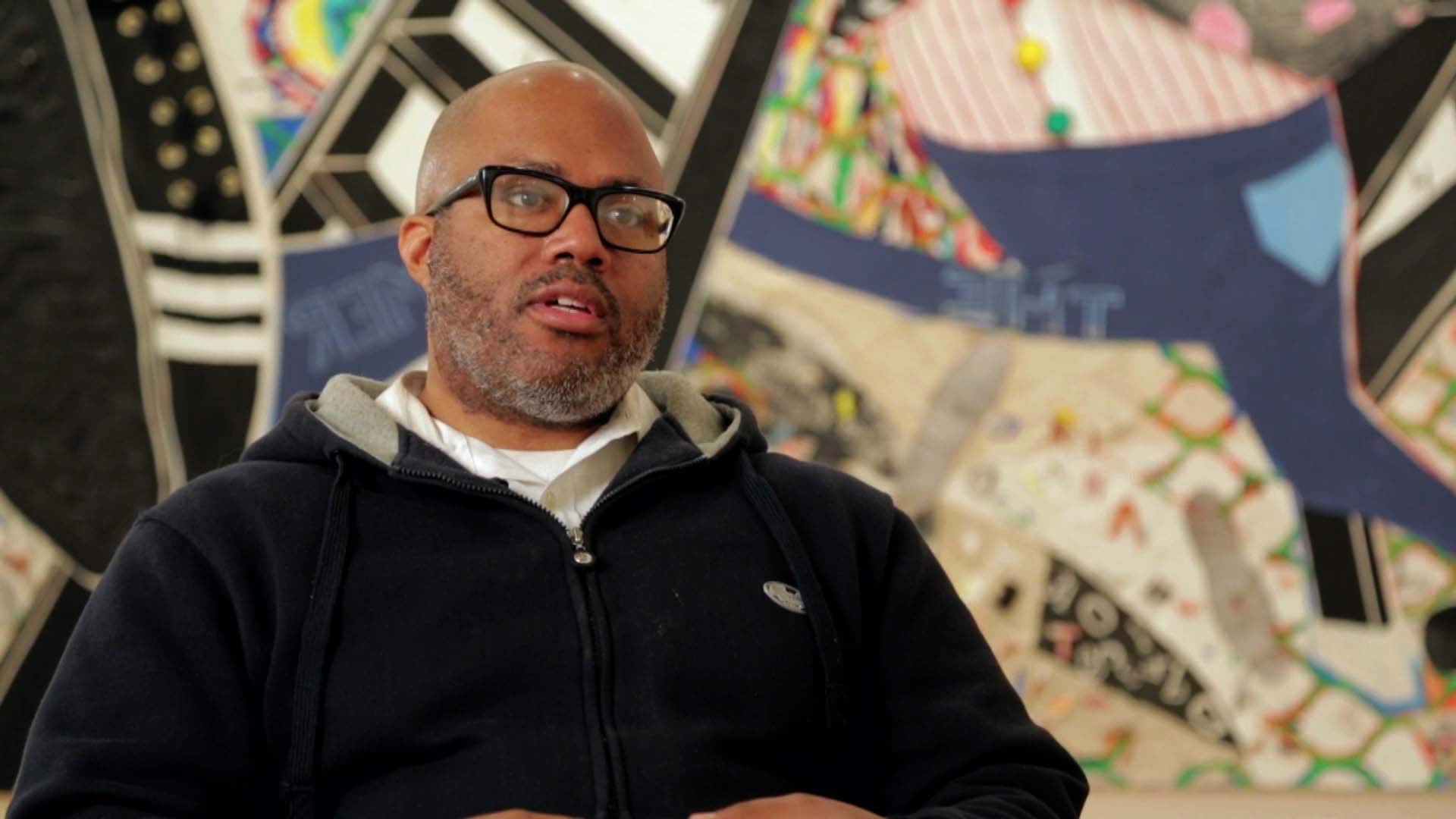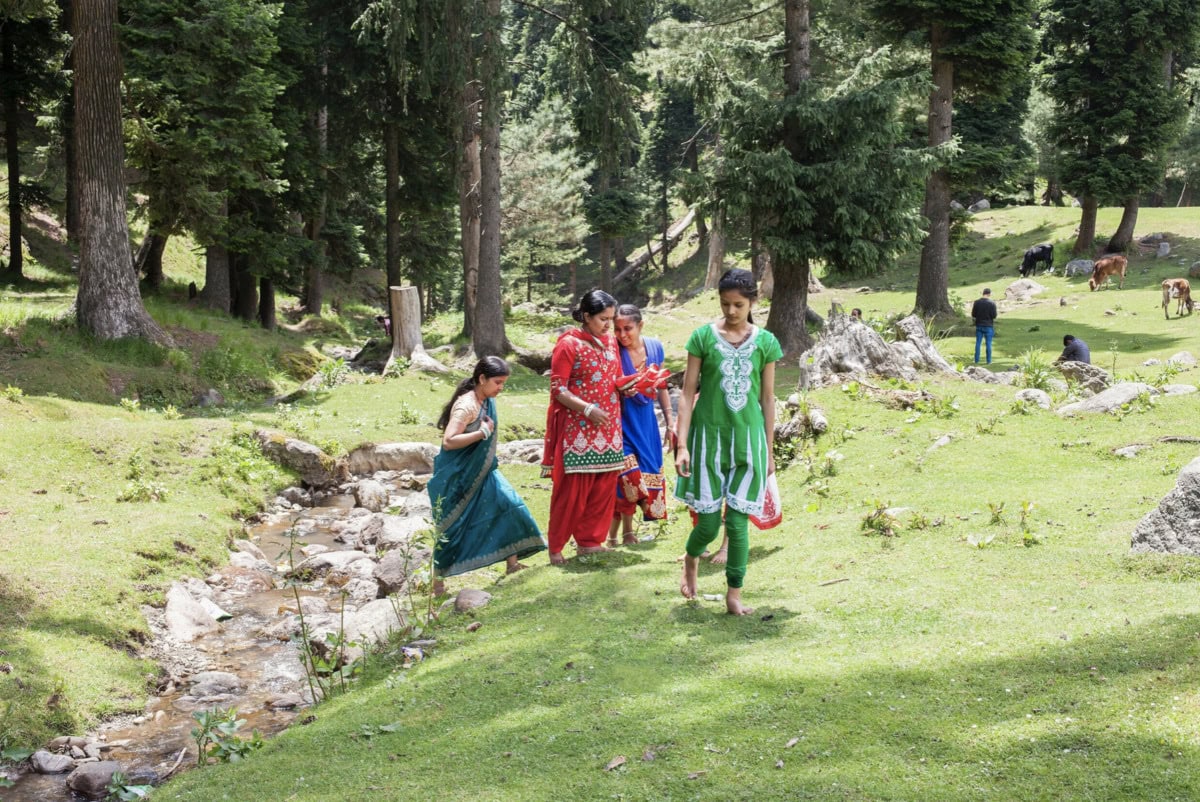
In 2012, Nashville photographer Christine Rogers went to Northern India on a Fulbright grant to explore a rather idiosyncratic aspect of the tourism industry. The region is hailed as the Switzerland of India for its likeness to the Swiss Alps. It contains numerous hill stations — towns that served as summer capitals for the provinces or British colonialists. The area is known for both its cinematic history and political strife. Its mountains are often Bollywood backdrops, but the continuing occupation of Kashmir and conflict between the Indian government and Kashmiri insurgents stands in stark contrast to the romantic landscape. Khajjiar, Manipur, Sikkim, Darjeeling, Manali, Kausani, and many more not only claim to resemble the Swiss Alps, they claim the sobriquet as the true, authentic Switzerland of India, an irony that hooked Rogers from the start.
Rogers’s recent show “Neither here nor there” at Belmont University’s Leu Art Gallery in Nashville chronicled her time traversing the region, photographing tourists and learning their stories. I talked to Rogers about why tourists visit one hill station over another. The question was why she has returned to India three times since finishing her fellowship. For Rogers, the Switzerland of India is where cultural longing meets pictorial landscape, where tourists enact their desires for travel and exploration on a place where they have actually traveled and are actually exploring.
Rogers’s photography is often performative. While obtaining her MFA from School of the Museum of Fine Arts in Boston, she waited around in shopping malls, persuading unsuspecting families to have their portraits taken with her in the mall photo studio. Posing in 25 family portraits, Rogers sought an understanding of the type of family structure she lacked. Her parents divorced when she was a baby, and she never knew her father, never had siblings, never had that idealized nuclear family we’re raised to believe is normal, despite evidence to the contrary. Around the same time, she took a “family road trip” by herself around America and to her absent father’s hometown in Texas, seeking not the story of her father and her photographic forefathers who were drawn to Western landscapes.
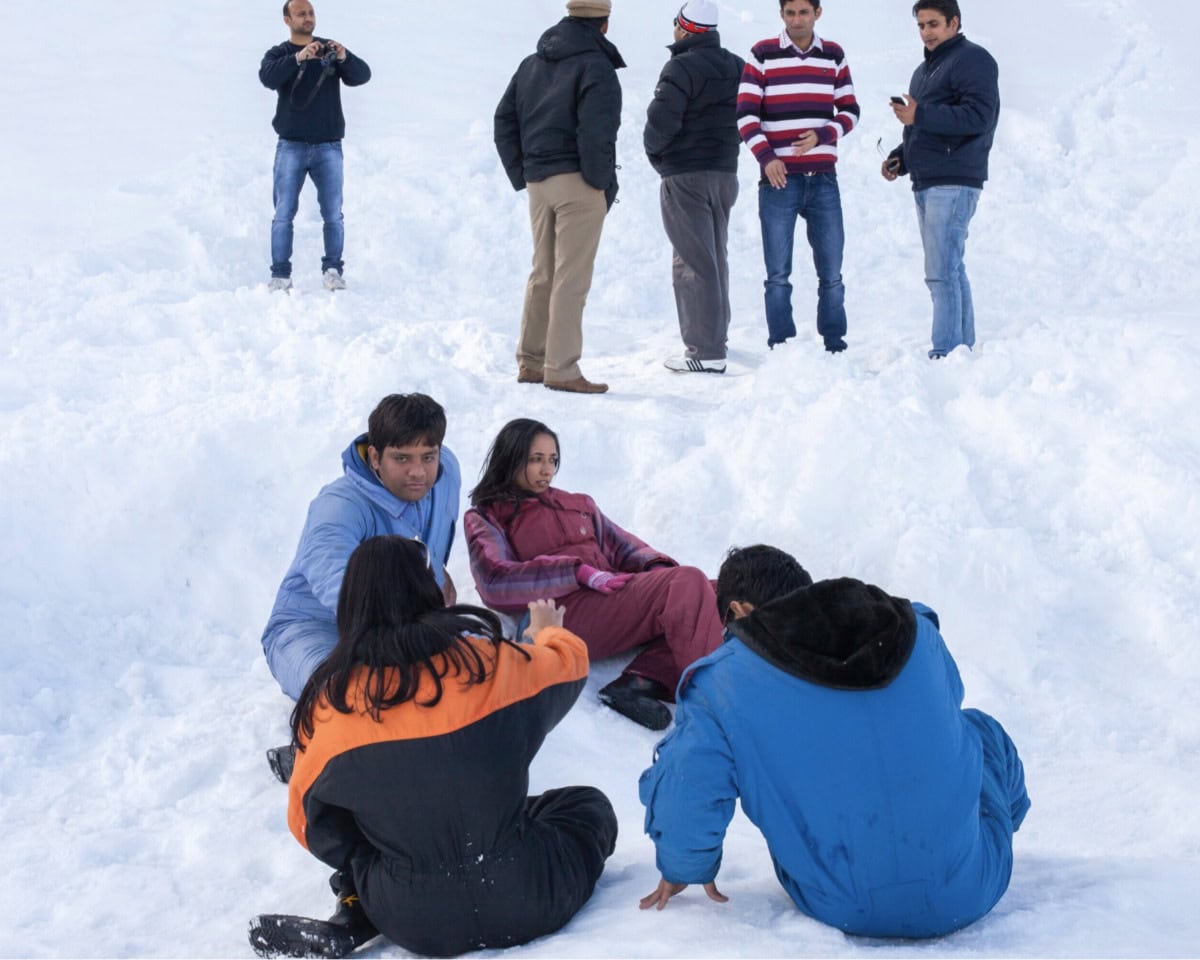
Her interest in place and narrative no doubt was nurtured by her BA in anthropology from Oberlin College and her attraction to James Joyce’s fiction. The work in “Neither here nor there” captures the vernacular of everyday photography. By setting up her camera where tourists take snapshots, Rogers has pieced together a narrative of desires that feel at once attainable and artificial, where people find belonging in the places they fantasize about. Because, of course, what we project onto — a landscape, a city, another person — has everything to do with what’s inside us. The resulting photographs are optimistic, revealing the natural beauty of Northern India as much as they meditate on our complicated relationship with place.
I spoke to Rogers at Leu Art Gallery in Nashville.
Erica Ciccarone: Your work has taken you on road trips around the country, inside the malls of America, to Europe, and to India. Whether it’s a strip mall parking lot or the Swiss Alps, the landscape is always changing. And then of course, there are the idealized notions of the past and future that we often project on landscapes, like the American Western landscape of the frontier, of opportunity and prosperity. Why does landscape figure so prominently into your work?
Christine Rogers: I’ve always been interested in a sense of place and if we can feel a belonging or a connection to a place. Early on in college, I studied medical anthropology and found myself driven to understand why a disconnect from one’s landscape or one’s natural world could relate to mental illness. I began to feel that no matter where we are, we are performing in relationship to our landscape. So visually, in my photographic work, the landscape is a staging ground for the figure to perform on, relating to and within that space. Either we relate to our stage or we don’t, but the figure and ground are always somehow glued together. In recent work about imagined landscapes, the performance takes place when the landscape is being looked at, experienced, or photographed. The connection or disconnect exists within the mind of the viewer — or the photographer or the traveller. Landscape itself is a painter’s term and doesn’t signify actual land, which is something else that I’m interested in — the cultural, political, personal uses and functions of a tract of land as a viewpoint or a vista, as opposed to actual earth.
EC: Can you give me an example of a figure performing their relation to landscape in your own work?
CR: In the case of the mall portraits, the figures are performing in relationship to the landscape of the American portrait studio, the mall as an extension of our domestic spaces, complete now with living room, playgrounds, couches, massage chairs, etc. The portrait studio is a commercialized extension of the family, the commodification of family and the family unit. The figures, myself included, are engaged in a type of performance: a performance of unity, togetherness, connection, happiness.
EC: You mentioned that a sense of place can give us a feeling of belonging. I am curious about how travel is a way to enact nostalgia … to remember a place where we belonged.
CR: If I’m a tourist of anything, I’m a tourist of tourists. I’m interested more in whether other people can find a sense of belonging from travel rather than if I can myself. I think, for many people, they travel to a place because they feel that they belong there. And I do believe we can find ourselves belonging to places that are nowhere near the places we come from.
EC: What brought you to Switzerland for The Promise of Real Estate in 2009? Did you feel like you found what you were looking for?
CR: My family is Swiss and we have always felt an intense connection to Switzerland, especially my mother. She had gone to college in Switzerland and deeply regretted her choice to return home. Our whole family would go to Switzerland once or twice a year when I was a child to see where our family had lived, to see relatives, to visit the landscapes that should’ve been our home. I went there to work on a project about the American impulse toward genealogical studies, the impulse to say “I’m Swiss” or “I’m Irish” when our families haven’t lived there for generations, yet we have the desire to reconnect with our familial landscape and family homes.
I was going there to explore this impulse within my family and others. This project was in the context of the Great Recession when the housing crisis made the idea of home ownership feel like a lost possibility. I went there with two photographs that my mother had given me of our family homes in Switzerland. She had assured me that if I just showed these photographs to anyone in Bern (a city of about 125,000) that they would be able to lead me there. Thinking that this was a wild goose chase and at the very least a funny conceptual constraint, I decided to let my mother’s absurd instructions guide me when I arrived in Switzerland. The amazing part was that it worked. They told me which bus to take, and on the bus they told me to get off by the edge of the woods. I was to walk down the road where I would see the town. In the town, I found a car dealership and they were like, “Of course, we remember your family. Your grandfather used to come and visit.” They drove me to the farmhouse where my family once lived, and the old man living there asked me to stay. We communicated in broken French and through drawings of landmarks, and he brought out a stack of letters my grandfather had written him over the years. It was exactly as my mother said it would be. I found these houses, and it became necessary to trust even more in my process and be open to where it might ultimately lead.
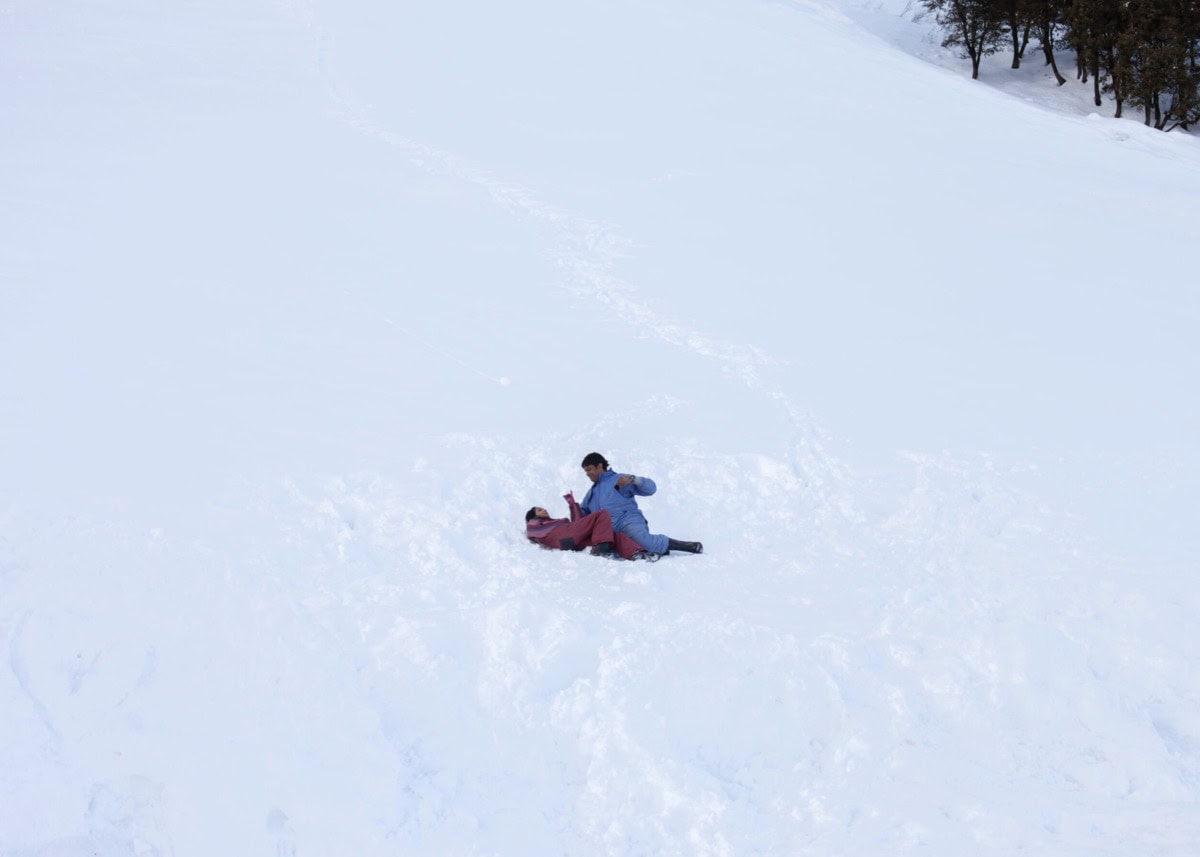
EC: That makes a lot of sense. One thing that strikes me about your work is how much it follows an unpredictable but totally sensical progression. How did your journey to Switzerland lead you to India?
CR: The work from that trip was interesting to me on a personal level, and essential, but [my interest] was almost an emotional reenactment of my grandfather and my mother’s need to return again and again to his family’s home and not really about the [finished] work. I’ve come to believe it wasn’t the real reason I was in Switzerland in the first place. While I was there, I decided that I would also go to the top of this mountain that seemed strangely familiar. I saw a brochure in the hotel room and a tiny corner of my brain had been combing over a memory that I had never told anyone because I thought I had dreamed it as a child. My dream (or my memory, I couldn’t be sure) was of a train that went up through the center of a mountain. At the top of the mountain where the train journey ends, there was a large ice cave. I remembered sliding around on the ice floors and running my hands along the ice walls and then walking outside to a blinding glacier and just running — my mother yelling at me to be careful not to sail off the edge of the mountain. As I sat on the train it became more and more familiar. I had been told since I was child that this place was heaven on earth, the top of the world.
The train stopped in darkness and I got off to see the ice caves, exactly like the ones I thought I had dreamed. I went outside and saw a glacier, covered this time with a huge heavy cloud. I looked next to me and saw an Indian woman who looked at me and said, “This is heaven on earth.” We stood there looking, and I was struck by the question of how we had come to the same awestruck point from such different directions. I filed our encounter away in my head and returned to it a few years later, only to discover through research a massive, deep, complicated and wonderful connection between the landscapes of India and the landscapes of Switzerland. This is what led me ultimately to photographing the imagined landscapes of India.
EC: What do you mean by “imagined landscapes”?
CR: Imagined landscapes is a term I use to describe the process of looking at one landscape and imagining another in its place … [such as] looking at the physical landscape of the mountains of North India and imagining, dreaming about, and projecting, ideas of Switzerland onto it.
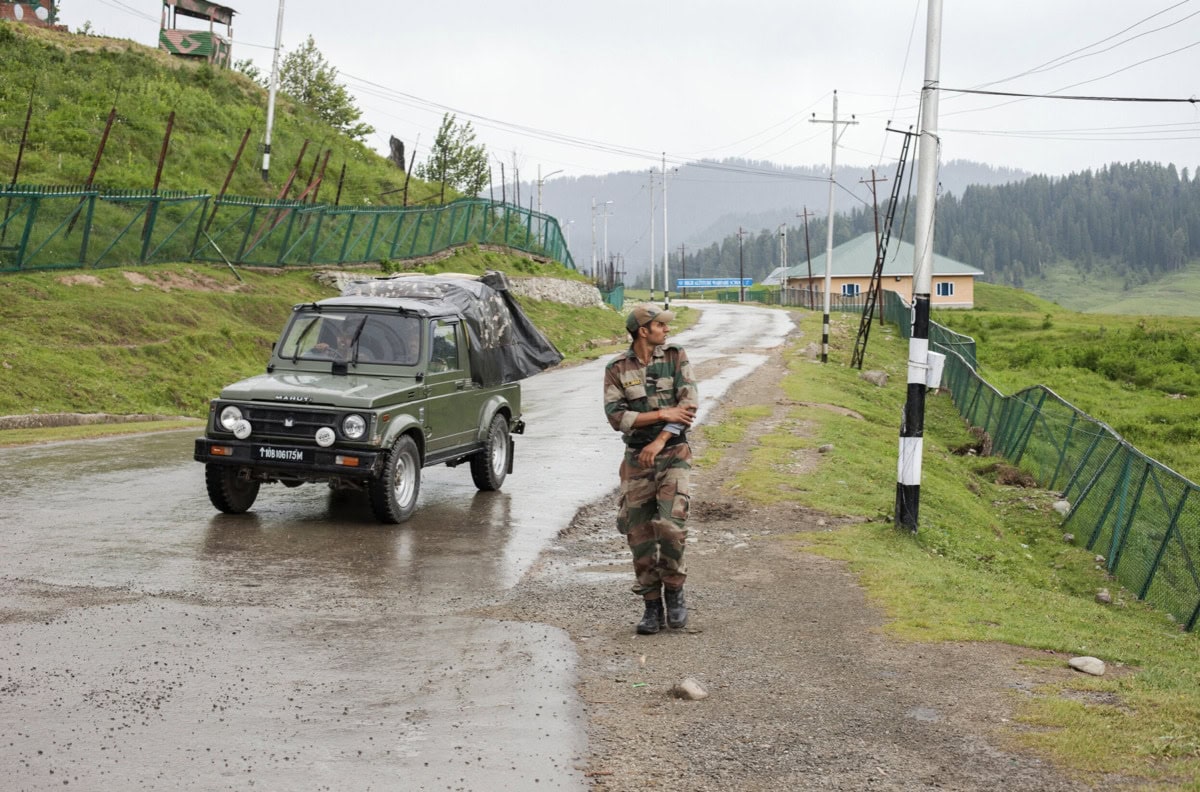
EC: What surprising commonalities have you discovered between the two destinations?
CR: Topographical commonalities, a love of nature, cold weather, snow, the feeling of high altitude and thin air, a tourist industry driven largely by natural beauty.
EC: “Neither here nor there” includes several photographs of geological elements — rock, earth, ice — and they’re printed on reflective paper. They give the impression that they have a history. Tell me about these works and how you see them communicating with the larger landscapes.
CR: They are Xeroxed images on wedding stationery. Since so many of the locations I photograph are honeymoon destinations, they become a sort of embodied invitation to these larger landscape photographs. They are of actual land: rocks, ice, mountains moved by earthquakes, migrant birds, things that migrate and move due to natural and unnatural causes. Land without a vista, land itself. They were shipped back from India and were water damaged on their way. They’re scratched and bent and have a physical history. Visually, since they’re so reflective, they act as a mirage and as a mirror. To see the image of earth or ice or birds, you have to physically move and catch it within the light. When you look at it directly, you see a faint reflection of yourself. It turns the idea of the imagined land back again to the viewer, reminding them of the ongoing relationship between an image of a real thing and the projection of an idea.
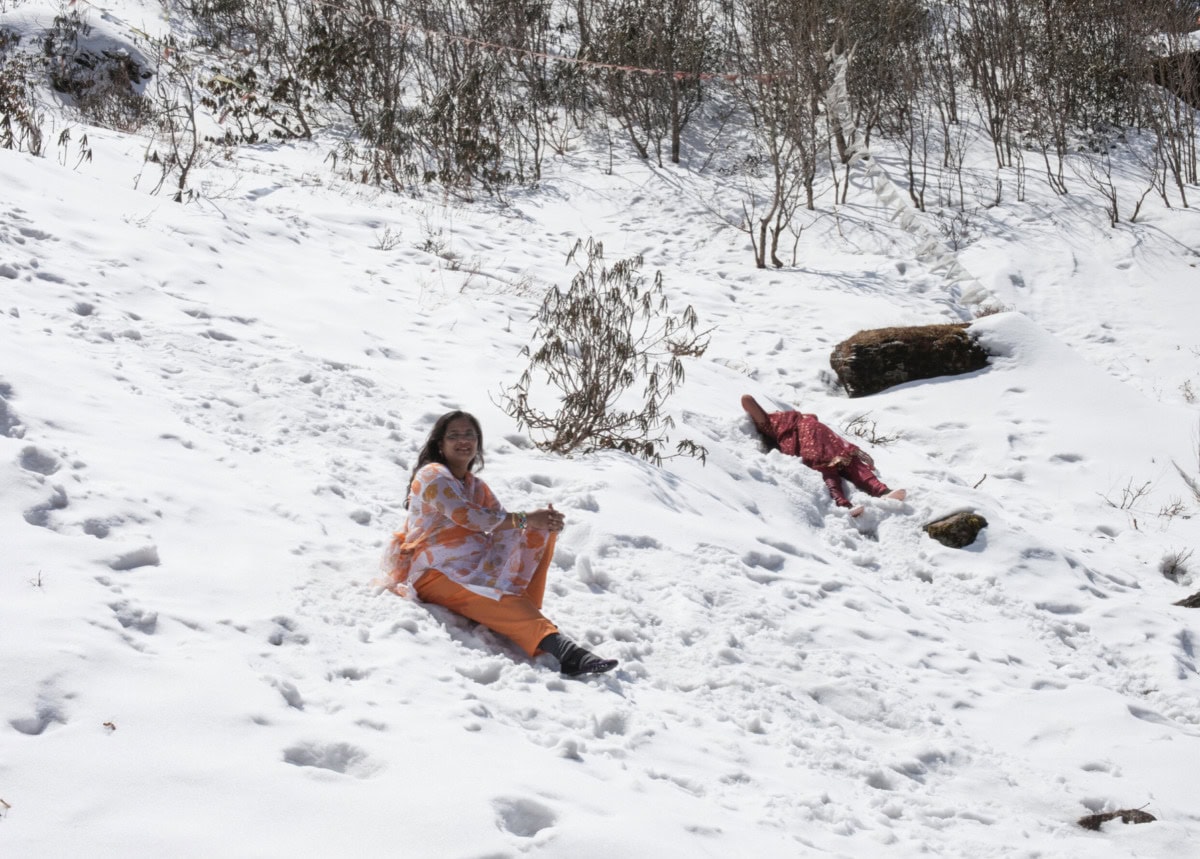
EC: What kind of camera did you use for “Neither here nor there” and “The Switzerland of India,” and why?
CR: I guess this is the performance part of the work. My ongoing obsession with the vernacular in literature, especially with the choir of voices created by Homer and James Joyce, led me to feel that it was only right to bring several cameras and photograph with all of them for this project. I’m making art in a tourist destination, right in the spot of the photo opp, and I wanted my work to speak to that multi-voiced perspective. Some are film, some are digital, some are prints from found negatives from other people’s vacations, some are stills of Bollywood films shot on location.
EC: You’ve returned to Northern India three times since the Fulbright trip. You must have had many choices to make for this show. What was your editing process like? What photographic components did you consider?
CR: It was long and arduous. I eventually laid photographs down on my floor and rearranged them like a puzzle. I like narratives, and creating them is my ultimate goal. The narrative I came up with for the installation is like a landscape, it moves from arid high altitudes to a watery rushing river and then ends on a photograph of flamingos brought in with the tide.
“Neither here nor there” was on view at Leu Art Gallery at Belmont University in Nashville from October 3 to October 21.

